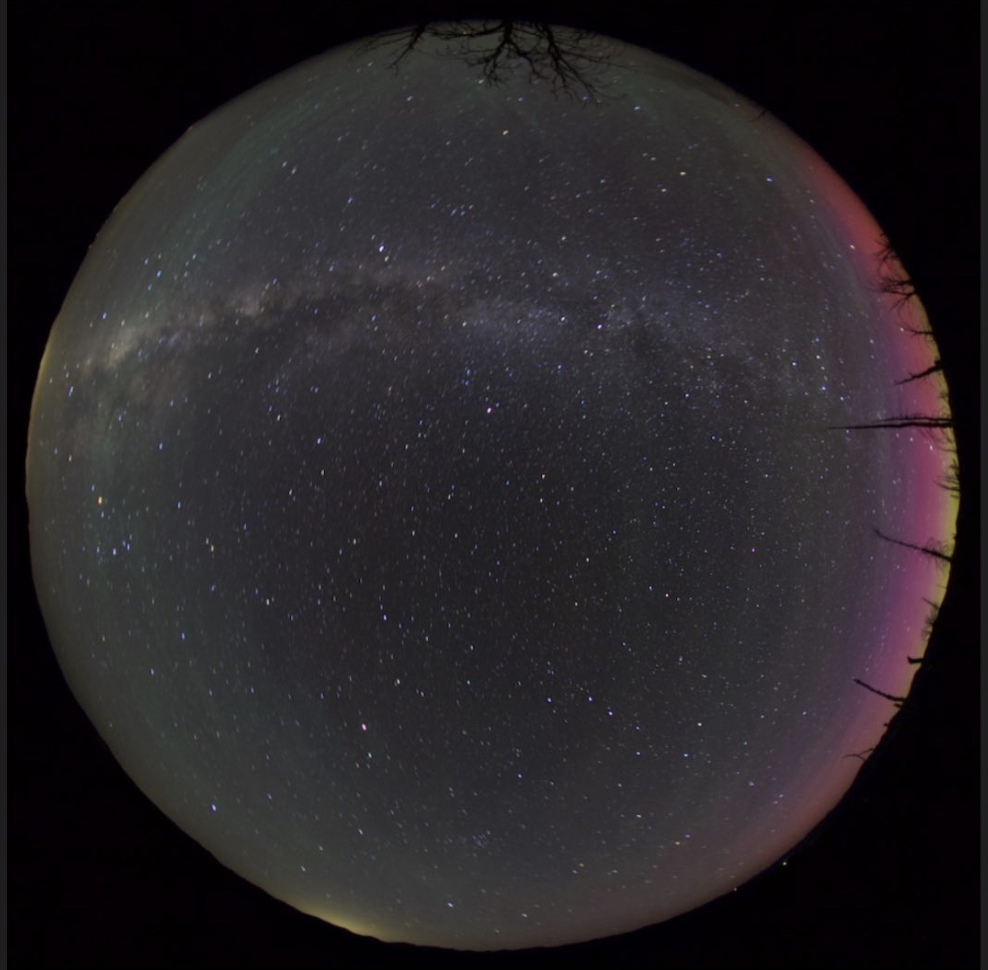
Why do the constellations change?
As the year progresses, the constellations within our night sky change over time. This occurs due to the Earth’s revolution around the Sun. As our planet orbits the Sun, on Earth we are physically looking into different parts of space throughout the year. This causes us to see different constellations and results in having a set of Summer and Winter constellations.
In the Northern Hemisphere, some constellations remain visible regardless of the time of year. These constellations are known as being circumpolar. This means they circle closely to our North celestial pole and never dip below the horizon. Here in the Northern Hemisphere, we have 5 notable circumpolar constellations: Ursa Major, Ursa Minor, Draco, Cepheus, and Cassiopeia.
Methods for identifying constellations
An easy method for identifying constellations within the Boise night sky is by using a method called “star-hopping”. Using the Big Dipper, we can find 6 other constellations by hopping through the summer night sky.
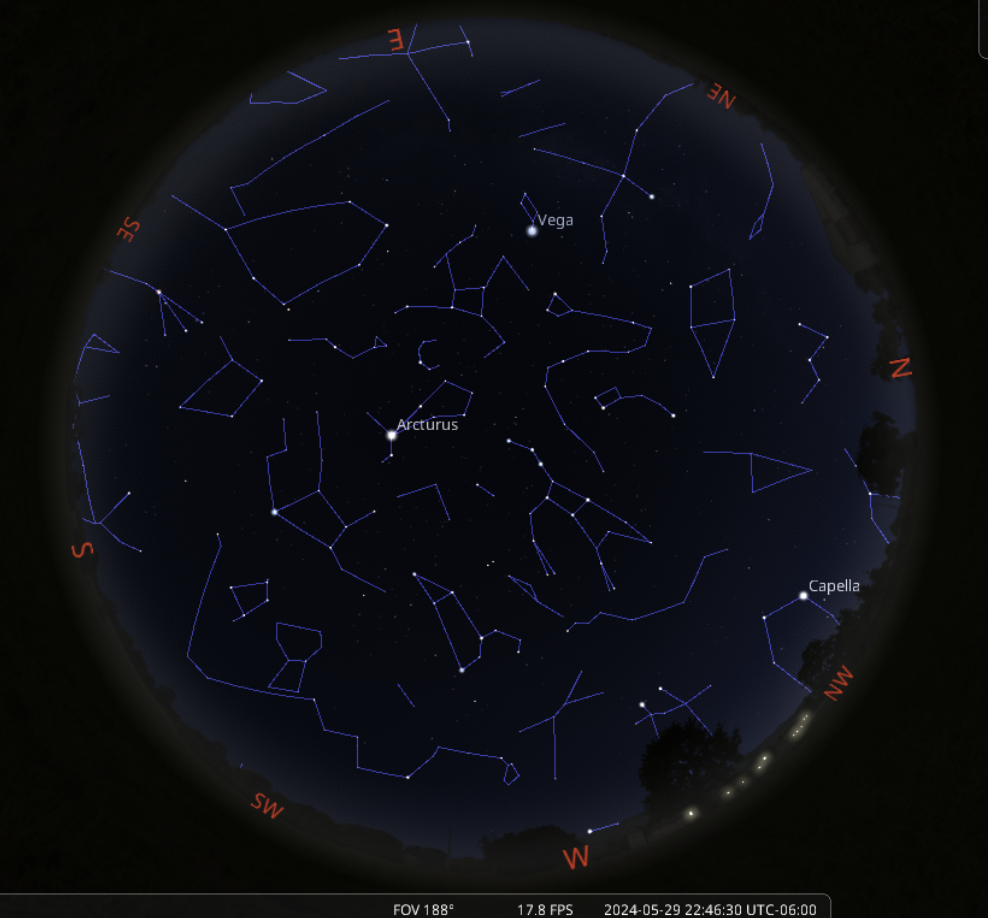
Now if we focus on the easily recognizable Big Dipper, we can use it to find other constellations within the night sky.
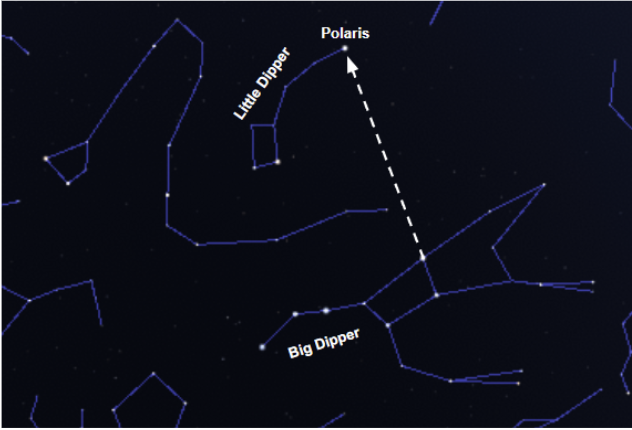
Using the Big Dipper, also known as Ursa Major, if we start with the star that is at the tip of the spoon shape, we can find another constellation known as the Little Bear, or Ursa Minor. The star that this arrow points to is our North star, Polaris, which is a star that happens to be aligned with our North Celestial Pole.
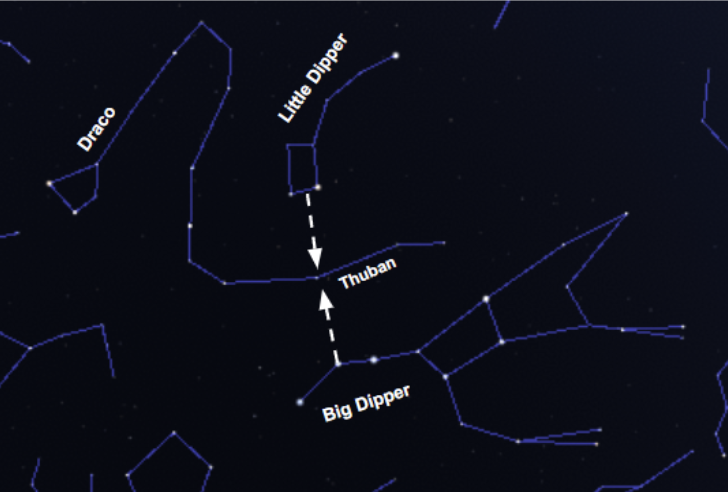
Next, using the highest stars on the ladle handle, which is a binary star system Mizar and Alcor, and the Little Dipper, we can locate a faint, tiny star. This star is known as Thuban and used to be our old North Star over 5000 years ago. The Egyptians used this North Star as a guide when building the pyramids! Thuban is a part of the constellation Draco. To find Draco, trace a path from Thuban into a backward ‘S’ shape. You may get a little lost around the head however you will then be greeted with Draco’s two bright eyes.
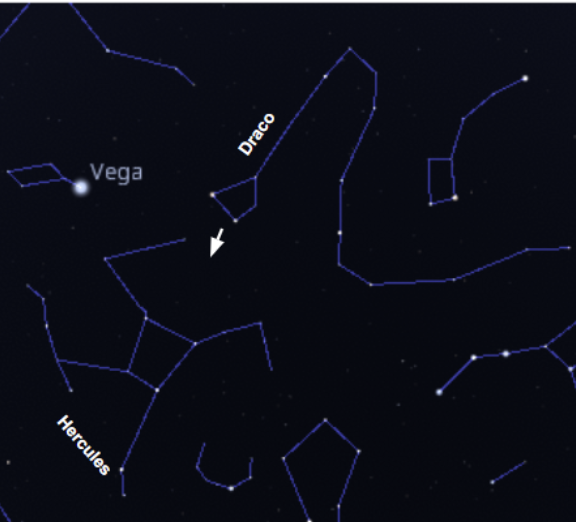
Across from Draco is his mortal enemy, Hercules, the Greek hero. These two are destined to face off against each other in the night sky for eternity. In the Boise sky, you can easily see the torso of Hercules.
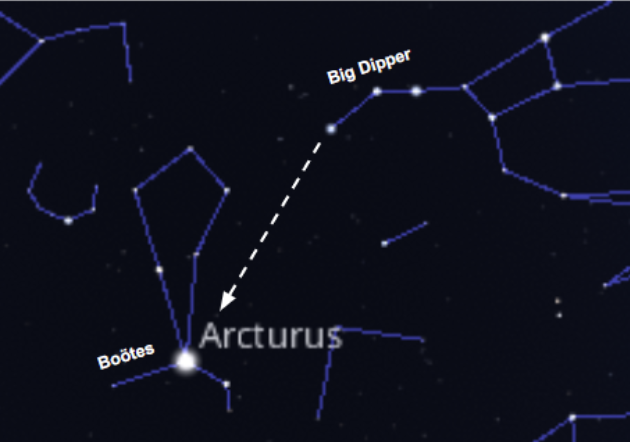
Returning to the Big Dipper
If we trace along the ladle handle of the spoon, we can “arc” over to Arcturus. This is one of the brightest stars in the Summer night sky and is very visible. This star is a part of the constellation Boötes.
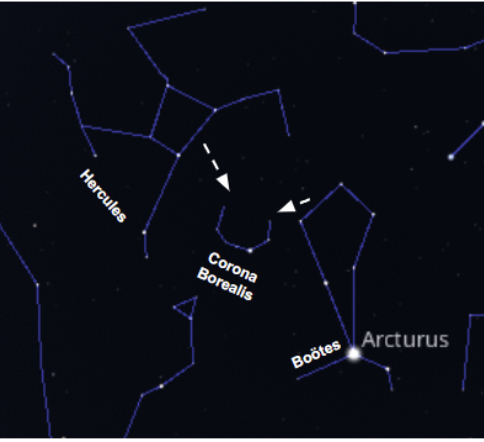
In between the constellations Boötes and Hercules lies a C-shaped constellation named Corona Borealis.
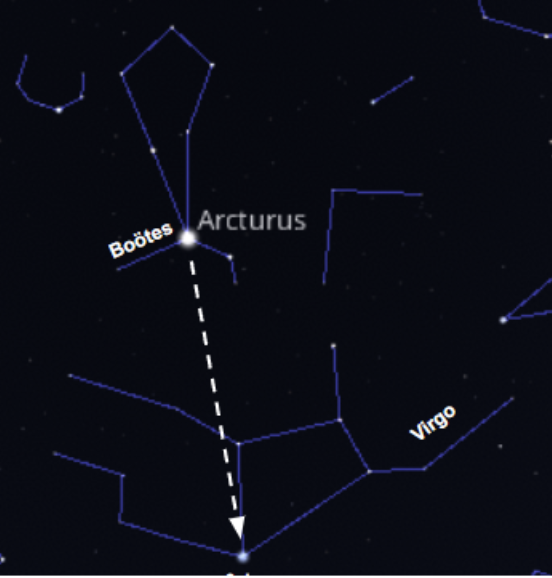
Returning to Boötes, we can use Arcturus to find another constellation. From Arcturus, we can “spike” to Spica, a star in the constellation Virgo, one of twelve zodiac constellations.
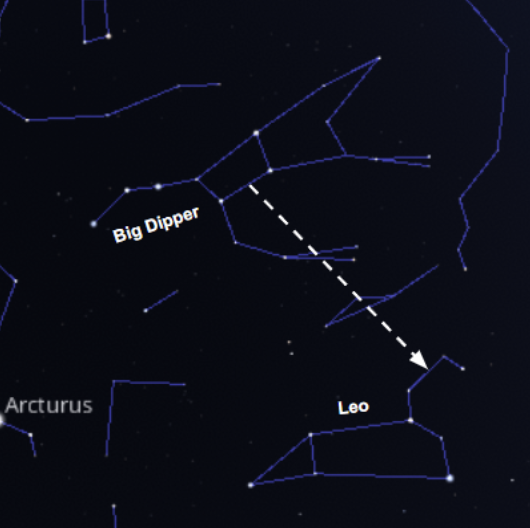
Finally, heading back to the Big Dipper we end our star-hopping guide with one last constellation. If you were to poke a hole through the spoon of the Big Dipper, the “water” would drip out onto Leo the lion’s head. Leo is another one of our zodiac constellations.
Using this star hopping guide, we have found the constellations: Big Dipper, Little Dipper, Draco, Hercules, Boötes, Corona Borealis, Virgo, and Leo. We have also found some interesting stars, including Polaris (the North Star), Mizar and Alcor (a binary star system), Arcturus (one of the brightest stars in the Summer night sky), and Spica (another very bright star).
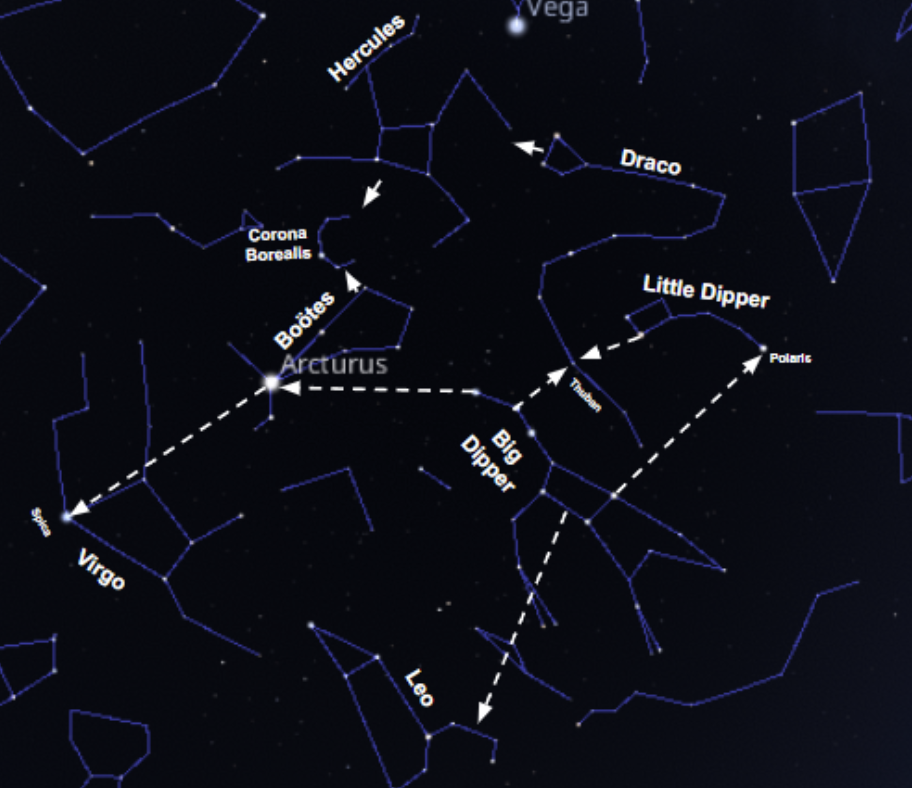
Tools for identifying constellations
While star hopping is a neat trick, some tools can be used to help identify constellations. One of these tools is a star map. A star map is a map of the night sky based on a given latitude and time of year. These maps can be useful for navigating the entire night sky, rather than just a few constellations.
Another useful tool is a stargazing app. Apps like Stellarium can help you navigate the night sky from your location. Just point your phone at the night sky, and the app will tell you exactly where certain constellations are.
Why go stargazing?
Our night sky is a gorgeous and fascinating thing to look at, offering us a glimpse into the unique objects that lie beyond our Earth and Solar System. The night sky also serves as a universal connection among people worldwide, creating a shared cultural history that links every human being, present or ancestors, together.
With all this information and these tools in mind, try navigating the night sky and learning more about the beautiful mysteries within our universe. Feel free to join us at the Boise State Observatory for our First Friday Astronomy events and Friday Stargazing events, to get a deeper look into the night sky.
Happy Stargazing!
Article written by Chandler Beasley, 2024 AstroTAC member.